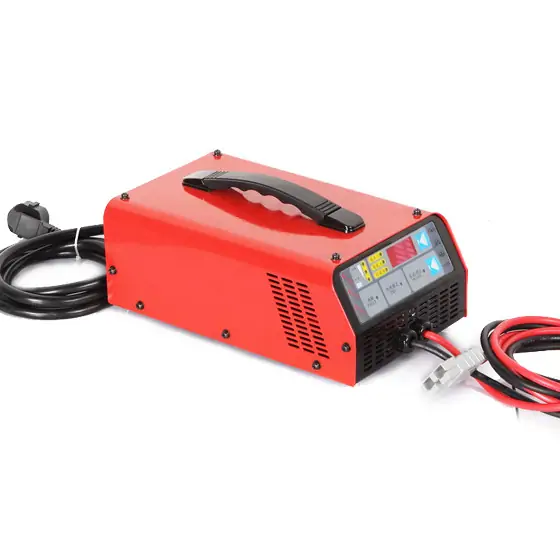Safety Checklist for Forklift Battery Charging Areas
A forklift battery charger station is a potentially dangerous environment which should be manned by trained employees to reduce the risk of accidents. Explosions, acid burns, musculoskeletal injuries, and the risk of electric shocks are all potential risks when changing and charging forklift batteries.
OSHA standard 29 CFR 1910.178(g) addresses these risks by establishing a standard forklift battery charging procedure and forklift battery charging area requirements. The following checklist helps meet OSHA standards and improve workplace safety at your charging station.
Forklift Battery Charging Area Requirements
Forklift battery charging area requirements must be strictly enforced to prevent accidents. A forklift battery charging station should be used only for changing and charging batteries, and meet the following conditions:
Provide adequate ventilation to disperse flammable and potentially explosive hydrogen fumes.
Provide appropriate personal protective equipment (hard hats, goggles, face shields, rubber/neoprene gloves, rubber aprons, and safety toe footwear).
Have a dry chemical, CO2, or foam fire extinguisher within easy reach.
Provide an eyewash station with at least fifteen minutes of flow.
Have accessible water on hand.
Include neutralizing agents (baking soda, soda ash) to neutralize spilled acid.
Have a nearby phone in case of emergencies.
Possess protective rails or bollards to prevent collisions while maneuvering trucks into the charging station.
Provide adequate warning labels clearly identifying hazards.

In addition, all staff manning a forklift battery charging station should receive appropriate training, including how to use a fire extinguisher. Truck operators should have completed appropriate forklift operator training.
ChangingForklift battery
Forklift battery charging procedures begin with the safe docking of the truck within the forklift battery station. Ensure brakes are applied before removing the battery.
Due to the weight of a forklift battery, use of a lifting beam, conveyer, overhead hoist, or similar heavy materials handling equipment is required by OSHA. OSHA prohibits changing forklift batteries using a chain and two hooks, as this produces uneven force, causing internal damage and distortion to the battery. Hard hats, safety footwear, and other appropriate PPE should be worn while changing forklift batteries.
Forklift Battery Charging Procedures
Forklift battery charging procedures require close proximity to sulphuric acid and electricity, and as such charging should only be performed by trained employees. Before charging, check the following safety concerns:

Are all employees wearing appropriate PPE?
Are any employees wearing metallic jewelry which could conduct electricity?
Is the area free of all open flames or any equipment capable of causing sparks?
Does the forklift battery charging station have adequate ventilation?
Are all metal tools kept away from uncovered batteries?
Are charger cables in good working order?
Does the charger have the correct outage voltage for the battery?
During charging, follow your facility’s forklift battery charging procedures. While these may differ from facility to facility, some steps have universal applications, such as:
Handle all electrolytes with a siphon or carboy tilter to prevent spillage.
Ensure vent caps are in proper working order.
Keep battery covers open for heat dispersal.
Prohibit smoking in charging area.
Check electrolyte level before recharging, using a hydrometer to record specific gravity.
Check the pilot cell
Check water level and record in service log.
Check voltage (if the battery uses sealed vents, do not recharge with more than 2 amperes.
Unplug and turn off the charger before connecting and disconnecting.
评论
发表评论